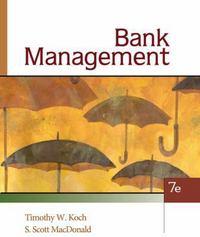Question
5. A consumer's MRS of y for x equals 2. Y is on the vertical axis and X is on the horizontal axis. Which of


5. A consumer's MRS of y for x equals 2. Y is on the vertical axis and X is on the horizontal axis.
Which of the following statements is TRUE?
I. He will be strictly better off if he purchases an additional unit of x if the price ratio is less than 2.
II. He should purchase an additional unit of x as long as the price ratio is greater than 2.
III. He is willing to give up 2 x for one additional y.
a. I only
b. II only
c. III only
d. II and III only
e. I and III only
6. Uma and Valerie live in the same town where they both face the same prices. Uma has
preferences that can be represented by the utility function U(X,Y)=X+Y Valerie has preferences
that can be represented by the utility function V(X,Y)=3X+3Y. Which of the following statement
is true?
a. Valerie gets greater satisfaction from her consumption than Uma
b. The quantity of X purchased by Uma PLUS the quantity of X purchased by Valerie will
equal the total quantity of Y they purchase.
c. Valerie and Uma will always purchase the same quantity of X with the same income
d. A tax on X would have a greater welfare effect on Valerie than on Uma
e. None of the above is true
7. After graduating from high school, Steve had three choices, listed in order of preference: (1)
matriculate at our campus, (2) work in a printed circuit board factory, or (3) attend a rival
college. His opportunity cost of going to college here includes which of the following?
a. the cost of books and supplies at the rival college
b. the income he could have earned at the factory plus the direct cost of attending
college here (tuition, textbooks, etc.)
c. the benefits he could have received from going to the rival college
d. only the tuition and fees paid taking classes here
e. cannot be determined from the given information
8. The income effect is
a. in the opposite direction from the substitution effect.
b. always in the same direction as the substitution effect.
c. always greater than the substitution effect.
d. Always less than the substitution effect.
e. could be in the same or in the opposite direction from the substitution effect.


Step by Step Solution
There are 3 Steps involved in it
Step: 1

Get Instant Access to Expert-Tailored Solutions
See step-by-step solutions with expert insights and AI powered tools for academic success
Step: 2

Step: 3

Ace Your Homework with AI
Get the answers you need in no time with our AI-driven, step-by-step assistance
Get Started


